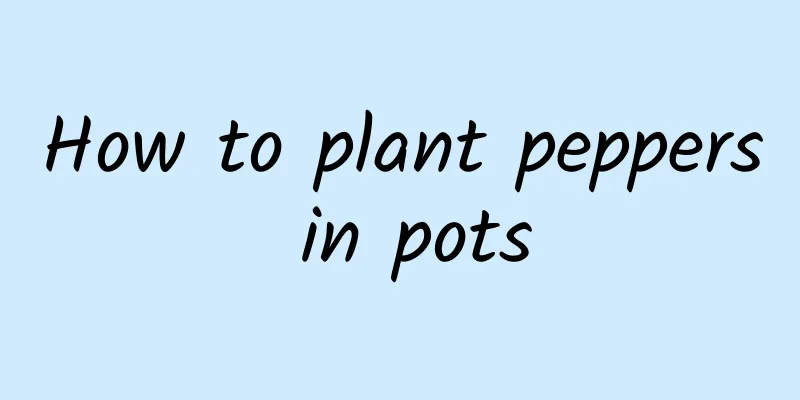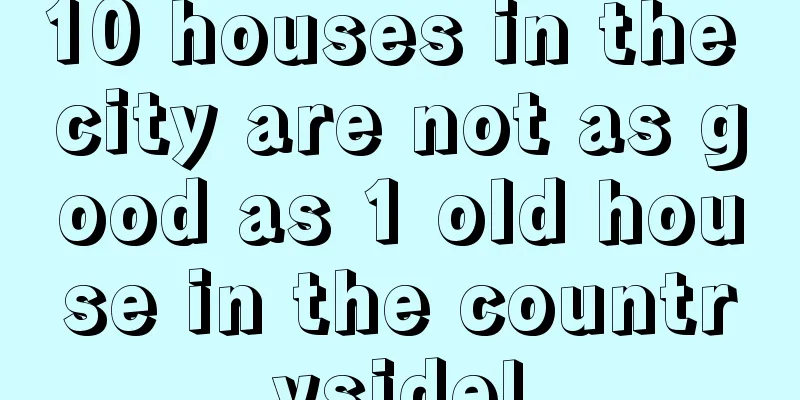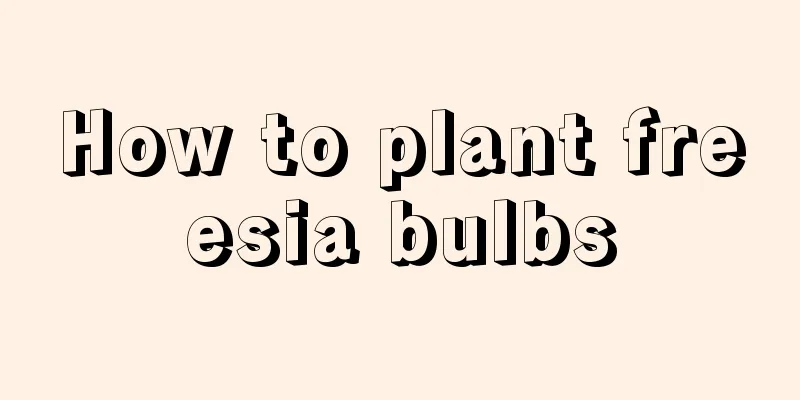How to plant peppers in pots

|
Potted peppers usually have small plants, green leaves, and the peppers are colorful. Many people grow these peppers not to eat them, but to grow them on the balcony for viewing, which is also quite beautiful. How to grow peppers in pots1. Planting soil: The planting soil for potted peppers can be prepared by mixing humus soil, peat soil and garden soil in a ratio of 1:3:0.5 to ensure that the soil is loose, fertile, breathable and well-drained. 2. Planting: Soak the pepper seeds in warm water for about 20 minutes, while keeping the soil moist. Sow the processed seeds in the soil, placing 2-3 seeds in each hole on average, and cover with a thin layer of soil. 3. Transplanting and planting: When the pepper seedlings grow to about 10 cm in height, you can start transplanting them. Simply pour out the entire cup of soil and the seedlings, and then transplant them into a large pot. After transplanting, be careful not to place them in a place with strong sunlight, and remember to water them thoroughly. How to plant peppers in pots1. Variety selection: Potted peppers generally choose high-yield varieties such as Hangzhou peppers and string peppers, and are suitable for planting on balconies and in homes. If you are planting ornamental varieties, recommended ones include colorful peppers, purple chili peppers, millet peppers and other varieties. 2. Selection of potting soil; For potted peppers, you should choose a medium-sized pot, mostly made of plastic. Plant one healthy seedling substrate in each pot, and it is recommended to use a mixture of decomposed crop straw and garden soil in a 1:1 ratio as the soil. 3. Sowing method: It can be broadcast or spot-seeded, but before that, soak it in warm water at about 50℃ for 15 minutes, then soak it in a diluted potassium permanganate solution for about 20 minutes, wash it with clean water and then sow it. Key points for caring for potted peppers1. Pruning: When caring for potted peppers, pruning is required when the length of the pepper seedlings exceeds 10 cm. Generally, the weak and overgrown seedlings are cut off, leaving only a few strong and healthy seedlings. 2. Light and moisture: During the maintenance process, sufficient light conditions are needed. In summer, strong direct sunlight should be avoided. In winter, it needs to be placed in a sunny location indoors. Sufficient water must also be ensured. Water it every 2-3 days to keep the soil moist. Be careful not to water it excessively to avoid water accumulation and waterlogging. |
<<: The cost and profit of growing chives
>>: Can kiwifruit be propagated by cuttings?
Recommend
What fertilizer is good for rose topdressing
Rose topdressing time The best time to fertilize ...
The significance and function of garden flower and tree pruning
The significance and function of garden flower an...
Is the dripping Guanyin poisonous?
1. Toxic The weeping angel is poisonous. It belon...
What kind of soil is good for growing osmanthus? How to change the soil for potted osmanthus
1. What kind of soil is good for growing Osmanthu...
What are the early-maturing and high-yielding varieties of wheat?
Wheat is a cereal crop that is widely grown aroun...
When is the best time to plant cabbage?
Autumn is the golden season for growing Chinese c...
How long is the growing cycle of amaranth?
Introduction to Amaranth Growth Amaranth is not p...
Why does Schefflera spheniscus drop its leaves?
1. Improper watering The leaf shedding of Scheffl...
What to do if the roots of the fortune tree rot due to overwatering? How to use rooting powder
1. Treatment methods 1. Remove from the pot: When...
What to do if the money tree does not grow new shoots
1. Replenish water in time (1) Specific reason: I...
Why can't Clivia be given as a gift?
1. Reasons why you can’t send it at will (1) Acco...
When is the best time to plant cabbage?
Chinese cabbage, as a member of the cruciferous f...
Is Phoenix Bamboo easy to grow in winter?
Are plants easy to grow in winter? We talked abou...
When to fertilize sweet potatoes? How to fertilize?
The key to obtaining higher returns from growing ...
Where is the best place for poppy to grow? What is the suitable growth temperature?
Where do poppies grow? Poppy likes to grow in a m...









